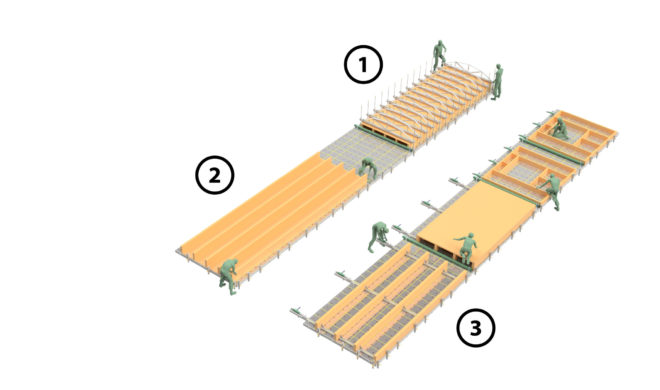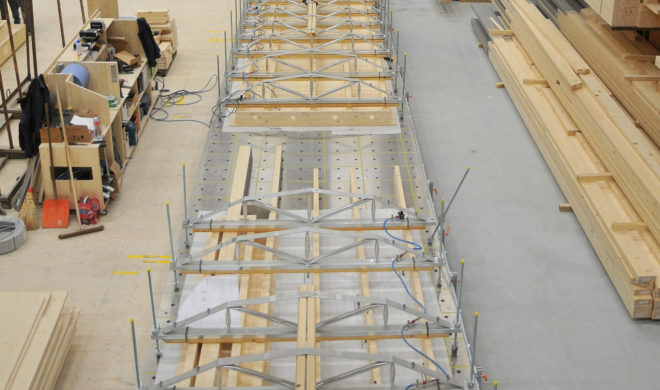More Flexibility with Modular Workstations
Every entrepreneur is always required to produce his products, such as wooden frame elements, as efficiently as possible – in the case of wooden frame elements with the additional requirement for flexibility in terms of design, type and size of the elements. In addition to the industrial approaches to the production line and specific solutions such as island stations, a new concept is emerging that ideally combines productivity and flexibility: modular workstations.
Bauen mit Holz, Ausgabe 01 2018
Automatic Google-Translation from the German Original:
The basic idea consists of a large, multifunctional work surface that can be easily divided into several individual workstations. The modular element construction system from the Swiss machine manufacturer Woodtec Fankhauser GmbH is ideal for this. Several modules are put together to achieve any table size, starting at 12-15 m and can reach 24-36 m.
Optimal use of production space
Depending on the job, the table is now divided into workstations of different sizes. For example, two to three large outer walls or four to five small inner walls can be produced on a 24 m table. And of course any combination of these. Compared to island solutions, where a workstation is always 12 m long regardless of the element size, the production area can be kept very compact compared to production lines or more elements can be produced in the same area (see Figure 1).
At Künzli AG in Davos, for example, a decision was made about five years ago for an element construction table from Woodtec Fankhauser GmbH, which over time was expanded to the current length of 37.5 m. Franz Hauzenberger, Head of the Timber Construction Department at Künzli AG, who himself examined the acquisition of an element construction table as part of a conversion of production to ‘modular workstations’ in his student work, is very satisfied with the result: “In the same area as the old facility with Fixed workstations have since produced twice as many square meters of elements, with slightly more staff. “
Minimize transport routes
A shortening of the transport routes leads to another massive increase in production. The Woodtec element construction table was specially designed for the assembly and initial planking of the elements. Then these are swept in place and there is insulation, electrical installation and second planking (see Figure 2). From there they are loaded directly onto a flatbed. The production times can be massively reduced again through such short handling times. At Schäfer Holzbautechnik in Dottikon, which also switched its production to the new concept a few years ago, the material depots for panels and insulation were also set up right next to the element construction table. This greatly reduces the material flow paths to serve all workstations.
Eliminate latency
Another advantage of the fact that elements can be produced almost independently of one another is that there are no latency times where teams have to wait until other work steps have been completed to start their work (see Figure 2).
Daniel Küng, operations manager at Schäfer Holzbautechnik explains the following: “Basically, an employee works at an element / workstation and creates the element himself from the beginning through to loading If a second employee is necessary, we can react quickly and support one another thanks to the nearby workstations. “
Not only modular but also multi-functional: roof, ceiling and wall
Thanks to the appropriate accessories and extensions, each workstation on the element construction table can be individually optimized for different element types (see Figure 3). This means that an entire building can be produced on the same table: wall, ceiling and roof elements.
For roof elements, special double rails with additional riders can be mounted on the normal surface of the element construction table. These enable even more efficient production of roof elements that always have the same rafter spacing.
Another trend that has been revolutionizing timber construction for several years is the gluing of false ceilings to form what are known as box elements or hollow boxes. These have statically improved properties and are often used in multi-storey buildings. These can also be produced using an additional extension on the element construction table.
At Beer Holzbau AG near Bern, it was precisely this system, where the force required for gluing is introduced pneumatically via a press bracket, that was decisive for the switch to the new concept. Since a certain pressing time has to be observed when gluing the element, the concept with a long table is particularly advantageous. Production manager Stefan Bachmann says: “We work alternately, that is, while one element is being pressed, we can already prepare a new one at another station.”
The table is divided as optimally as possible. “It does happen that in addition to gluing, we also create a normal inner wall on the table when it opens from the space,” says Bachmann. Of course, the sequence of loading onto the flatbed must also be taken into account in order not to lose time when erecting.
More Flexibility with Modular Workstations
Increase productivity without having to forego flexibility
Daniel Küng from Schäfer Holzbautechnik sums up the basic idea of the concept once again: “At SHT we produce elements that are so different in size and shape, and we also act so flexibly in the choice of the element construction system that it would have been impossible to rely on a fixed one Determine the size of a workplace. With our 36 m long element construction table and the sliding side stops, we can react optimally to every form of element. “
From a business point of view, too, says Küng, the production with a long element construction table and the accessories is definitely a complete success. “With the new method, we were able to save a lot of time compared to the old facility. Especially with more complex buildings, I estimate the time savings per man and day in prefabrication to 45 to 60 minutes. ”In addition to space savings, shorter transport routes and faster production times, a massive increase in quality was achieved, which firstly saves a lot of time on the construction site and secondly, lead to an improved image on the customer side.
Gradual optimization of the system
With this flexible concept, you are far removed from an overall industrial plan not only in terms of the layout of the system, but also in terms of acquisition. Thomas Fankhauser, managing director and founder of Woodtec Fankhauser GmbH wants to emphasize this advantage again. “Thanks to the modular system, it is possible to start with modest investment costs that correspond to the current needs of the company and to extend the length of the table and the equipment of the workstations step by step. Depending on the development of the market, with minimal risk. “
More News
Show All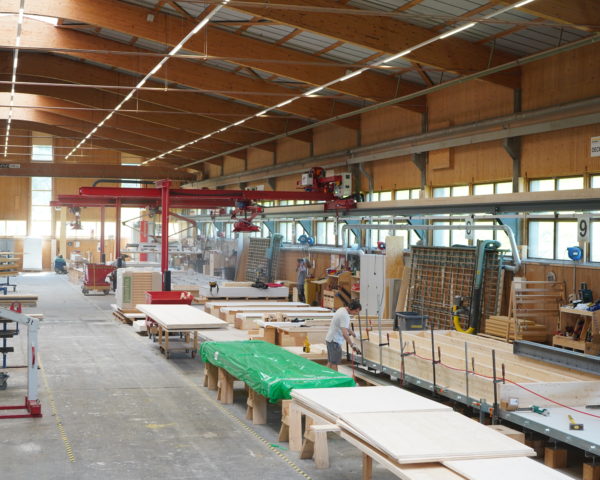
Prefab: Focus on Material Handling
The new production plant of Stuberholz AG does not score with fully automatic…

Stationary Workplaces Work Best
The Lehner GmbH from Heidenheim relies on stationary workplaces in their newl…
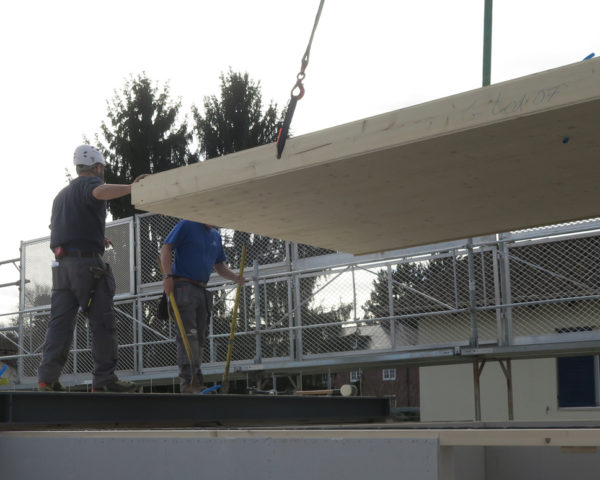
Added Storeys and Extensions
With increasing urbanization and the legislative measures against urban spraw…
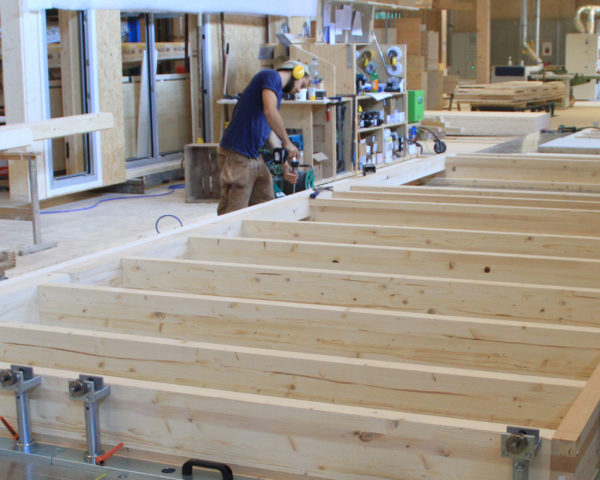
Frame Prefab with Manpower
Industry 4.0 is not necessarily synonymous with automation and automation has…

Prefabricate Roofs
A new trend could emerge in the manufacture of roof trusses.

Modular Prefab
The trend towards individual solutions in timber construction and constructio…
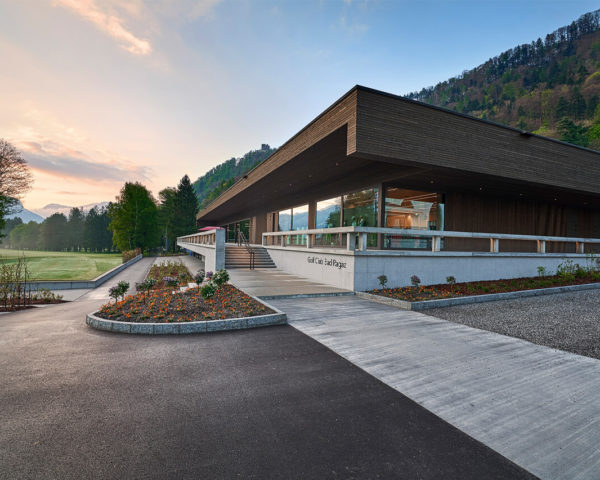
Glued Box Girders – Completely Without Screws
Glued box girders for roofs and ceilings with a larger span
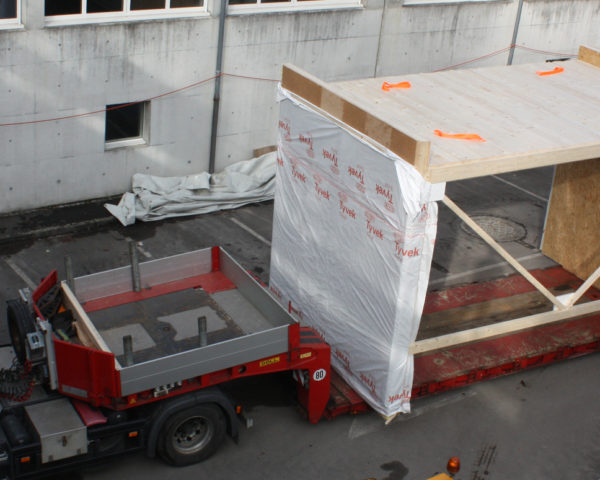
Timber for Athletes
Whether sprinting, hurdling, long jump or javelin throwing – thanks to ribbed…
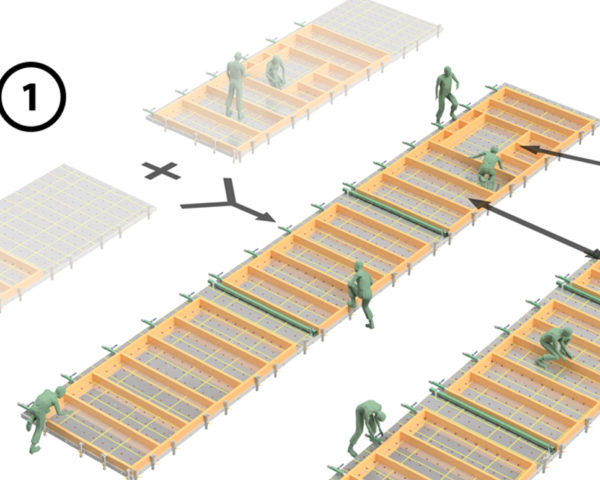
More Flexibility with Modular Workstations
The new concept for optimizing space, minimizing transport and material flow …



